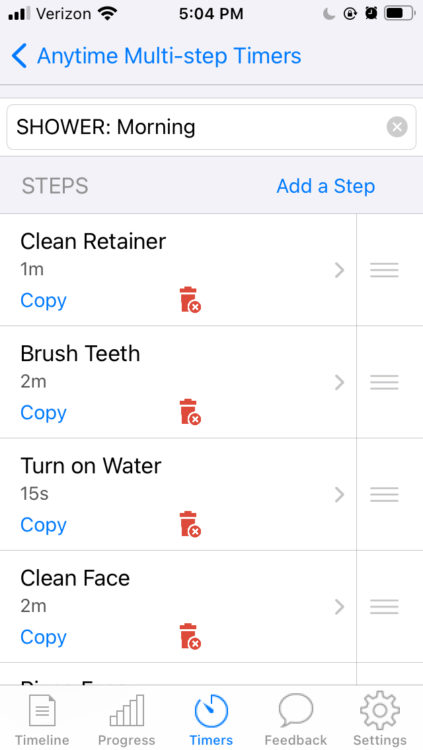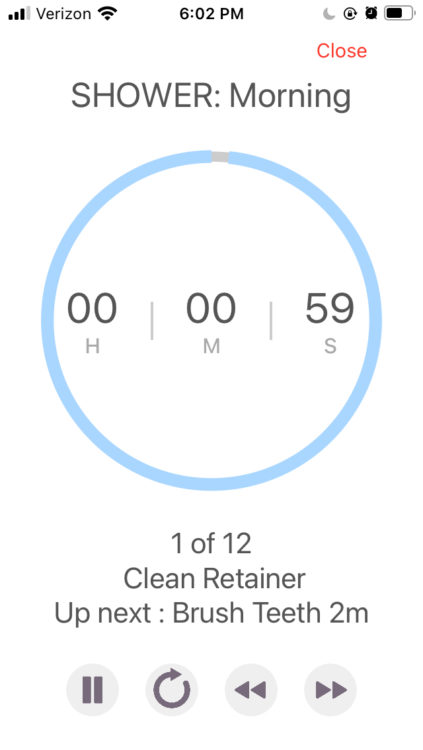When I was in high school, I stopped taking care of myself. I wanted to, but I couldn’t. Mundane, everyday tasks felt hopelessly insurmountable, and I would go days at a time without washing my face and even brushing my teeth. I kept telling myself to go freshen up, but then I would get distracted by one more thing: checking my email, grabbing a snack, whatever. For some reason, I couldn’t stop myself. Then, some other distraction pops up. And yet, another… After a couple of detours, I’d either get pulled into some more urgent task (i.e, the essay due at 11:59 p.m.) or collapse on the bed, whichever came first. Even on the weekends, it would take me eight hours on my way to the shower. For me, procrastination wasn’t a welcome indulgence, but a heavy, crushing force that ruled over me, 24/7.
Other relevant stories:
• Can You Qualify for Disability With ADHD?
• Emotional Dysregulation ADHD
• How Does Caffeine Affect ADHD?
• What is ADHD?
I was so unkempt that I felt physically unwell. And since organizing my backpack or cleaning my desk was out of the question, I constantly felt like I was walking through a maze. I couldn’t concentrate. Day after day, I’d tell myself: today is the day I’m going to get shit done. But I’d get sidetracked, over and over. Eventually, I gave up.
If this sounds familiar, you are not alone. Many people don’t want to admit that they struggle with so-called “simple” tasks, let alone tell anyone that they struggle to brush their teeth. Not that it’s ever an easy thing to talk about, but the fear of judgment can make it harder.
In reality, it’s a common experience, especially amongst people living with disabilities and/or illnesses. A wide range of medical conditions, from anxiety to autoimmune disease, can cause symptoms such as low energy and brain fog, which can make it hard to stick to a routine. Let’s ditch the shame.
I’ll go first: I have a disability (I was diagnosed with autism and ADHD as a kid), it’s affected all aspects of my life, down to my personal hygiene, and I want to tell you a little about what I did to cope.
I don’t learn or work the standard way, and this has impacted my life in both positive and negative ways. High school was tough, even though I had an IEP, and most importantly, I didn’t know myself as well as I do now. I burned out, and it felt as though my disability was progressively getting “worse.” That’s when I could no longer take care of myself.
For some time, I lived my life on autopilot, just doing the bare minimum to get by, until last year, in college, when I had a wake-up call. It was seething discontent, looming adulthood, and a lot of other, deeper things that I won’t get into right now. Nonetheless, it hit me: I couldn’t go on like this.
And I wasn’t going anywhere until I got a handle on the whole disability thing.
I did everything I was supposed to do — time blocking on calendars, using my reminder apps, and setting alarms. But I wasn’t making any progress. I knew what I had to do, but I couldn’t do it. I just… froze. Clearly, something was missing in my toolkit.
Enter Habit Hub.
(Note: I am not affiliated with the app or its developers.) I don’t remember how I learned about Habit Hub, but when I took a look on the App Store (Apple / Android), I knew I was onto something. Basically, Habit Hub is your virtual timekeeper, breaking down your to-do list into minuscule time blocks. The versatile app enables users to build multi-step timers from scratch. The timers work similarly to ones in any number of yoga and workout apps — you run them on your phone when you get down to business, and it’ll tell you what exactly to do — but the interface is much more intuitive. And needless to say, you can use them for plenty of things other than meditating or doing planks, which is what I did.
First, I built a multi-step timer for my AM and PM bathing routine. I listed everything I had to do before I get started with my day (brushing my teeth, washing my face, etc.), estimated how long it would take to complete each task, and put them all in an order that made sense.
For reference, this is what my AM bathing routine looks like:

And this is what the app shows when I run the timer:

As you can see, the timer only displays the task on hand and the next, so I’m not thinking about everything at once. I didn’t have to, since Habit Hub will make sure I won’t skip any steps.
What’s more, Habit Hub provides me with immediate feedback as I engage in a task. As you can see, the time indicator shows how far along I am, and how long I have left until I need to move onto the next step. I also get a voiceover reminding me right before a task ends and right before a task starts, so I don’t have to keep my eyes glued to my phone the entire time. These visual and auditory prompts help keep me on my toes.
Using Habit Hub’s timer system minimized the mental strain it took to complete activities. And “I have no time” was no longer an excuse, when I saw how long, at most, I needed to complete these routines. (And, for those that need a harder push, Habit Hub also allows you to create a to-do list linked to timers, enable reminders, and set goals).
With the help of Habit Hub, I re-taught myself to shower, brush my teeth, and even moisturize twice a day. Subsequently, I paid $2.99 for a one-time upgrade so I could save unlimited numbers of presets. I created a timer for cleaning my room, and some more for different hairstyles and makeup looks. I still use Habit Hub every day. Decidedly, it was a worthwhile investment. I felt good about my fresh breath, my glowing skin, and most importantly, what I could achieve while disabled.
Don’t get me wrong: overcoming a setback takes more than a single app, especially when it involves a pervasive, lifelong disability. I also understand now that I was also struggling with chronic stress and anxiety. In order to be where I am now, I’ve undergone frequent therapy sessions, medication adjustments, and the raw, vulnerable work of reconnecting with my passion. I’m just an imperfect human who happens to be disabled, and I’m not here to sell a quick fix.
That being said, technology is a force to be reckoned with. When I desperately needed practical, hands-on support to navigate everyday life, Habit Hub delivered. As someone who cares about accessibility, assistive technology, and all that good stuff, I’m very impressed with Habit Hub and I hope that more developers will venture outside the usual calendars/to-do lists/diary boxes.
Getty image by Widoko Bagoes.

